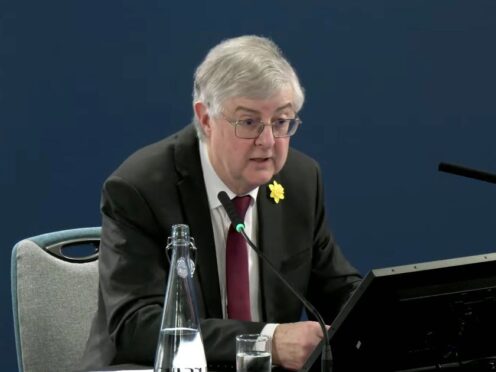
The First Minister of Wales has been unable to recover messages from his phone for a period spanning almost three years, an inquiry has heard.
Mark Drakeford, giving evidence at the UK Covid-19 Inquiry, said he had “no way of knowing” how or where messages were stored on his device.
He was asked by Tom Poole KC, counsel to the inquiry, whether it was correct that he had been unable to recover messages from July 2018 to March 2021 from his Senedd-issued mobile phone.
Mr Drakeford replied: “Apparently not.”
Asked what efforts had been made to recover the messages, he told the hearing: “Well I use only one telephone.
“There are a number of telephones you could use but I use only the one and that’s the one supplied to me as a member of the Senedd, not as a Welsh Government minister.
“I have no knowledge or expertise in the way in which messages are stored or not stored. As soon as the inquiry asked for messages, then my phone was handed over and all the messages available have been made available to the inquiry.
“I would have no way of knowing where they were stored or how they were stored or which were still available, but efforts would have been made by Senedd technical staff with that competence to make sure the inquiry had everything that was available.”
Mr Drakeford told the hearing he had used WhatsApp 11 times during the pandemic, including one message saying “thanks” and another complaining he could not hear the sound of the Senedd.
He described himself as a “very, very infrequent user of WhatsApp” and said he used text messages more frequently.
The inquiry heard there were a number of Welsh Government policies on the use of informal methods of communication, with WhatsApp prohibited for discussions of Government business.
Mr Drakeford replied: “I do accept that. It’s the policy that’s wrong, not the practice.”
He said the policy was in place from 2009, adding that “in the circumstances of dealing with a pandemic, the policy did not make sense”.
Mr Drakeford was asked about the disappearing messages function, which was turned on by a number of Welsh Government officials.
“Insofar as I am well informed about these things, I think it’s what people do all the time,” he said.
“I don’t think people would have been doing it with an eye to a future inquiry when they did so.
“Now that the spotlight has been shone on these matters in the way that it has, then it would have been better had things not been deleted.
“But I don’t believe it was in order to escape the gaze of anybody else that people would have taken that very ordinary decision.”

Enjoy the convenience of having The Sunday Post delivered as a digital ePaper straight to your smartphone, tablet or computer.
Subscribe for only £5.49 a month and enjoy all the benefits of the printed paper as a digital replica.
Subscribe